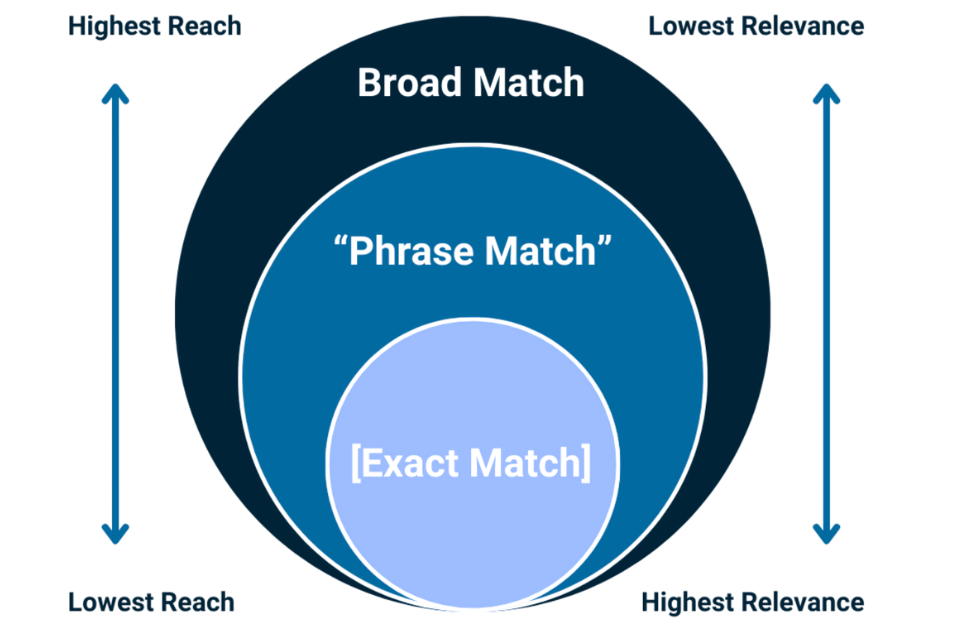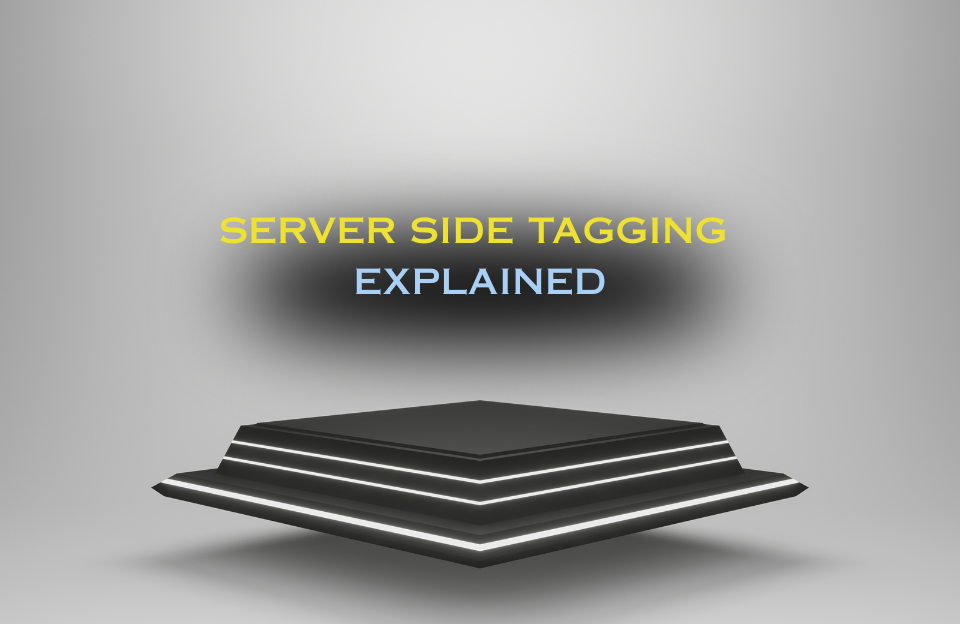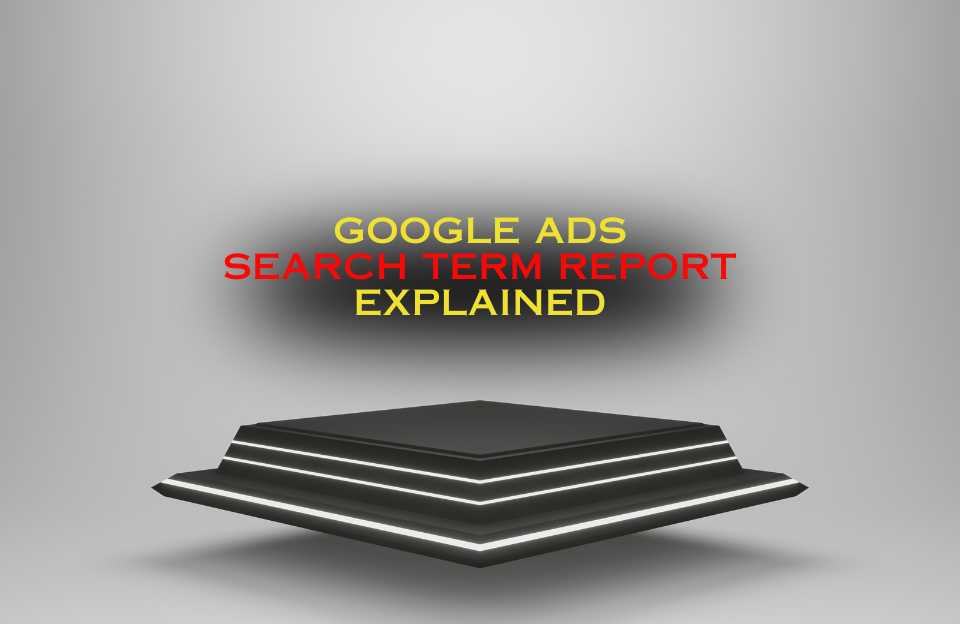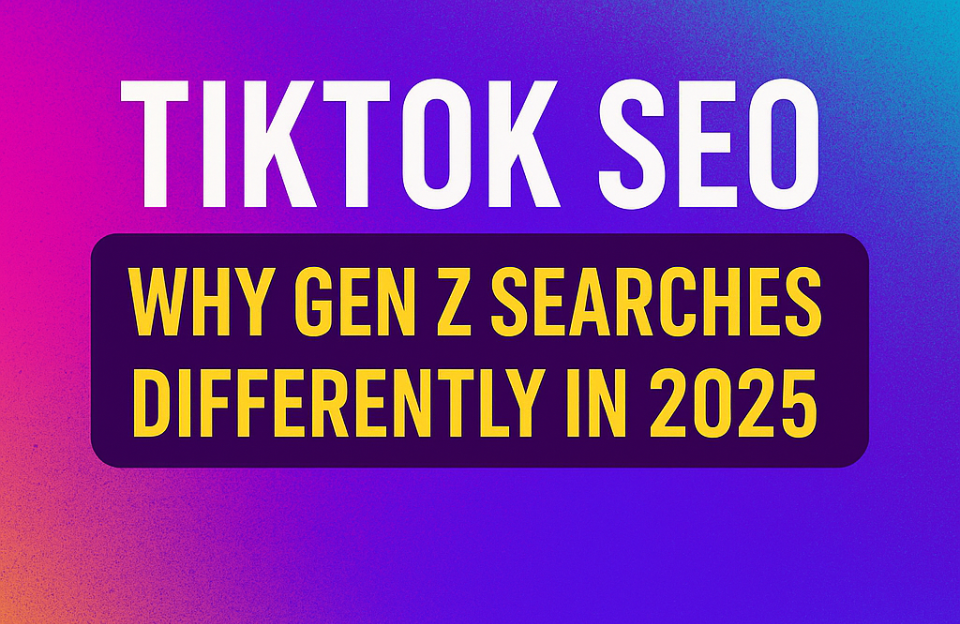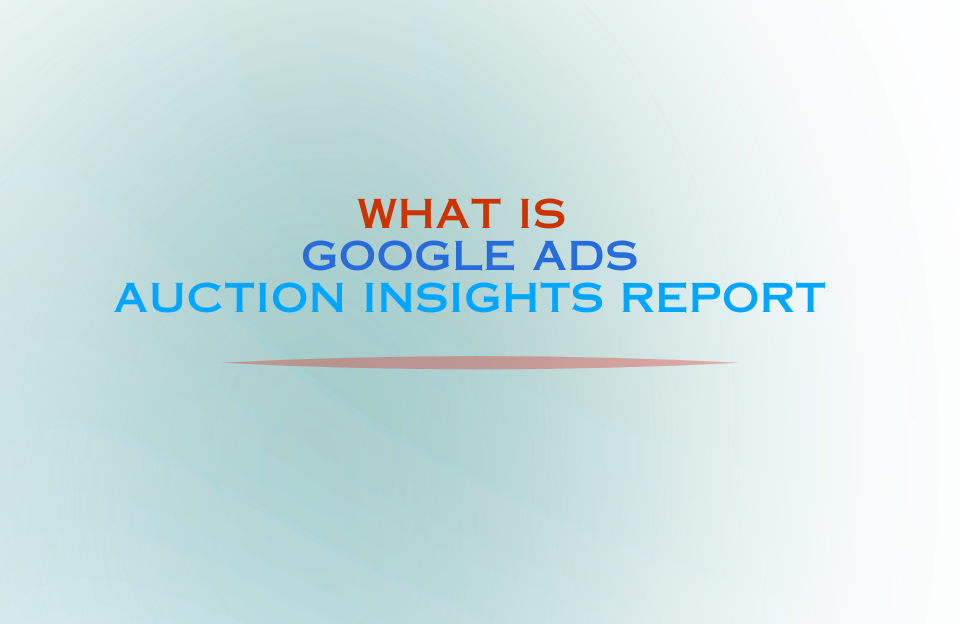When setting up a campaign in Google Ads, choosing the right keyword match types is one of the most important decisions you’ll make. Your match type determines how closely a user’s search query must align with your keyword to trigger your ad. Pick the wrong one, and you risk wasting budget on irrelevant clicks. In this guide, we’ll explain the three match types—broad, phrase, and exact—show you when to use each, and share best practices to get the most out of your campaigns.
What Are Google Ads Keyword Match Types?
Google Ads keyword match types define how closely a user’s search query must relate to your chosen keyword in order to trigger your ad. The three main match types are Broad Match, Phrase Match, and Exact Match. Understanding the difference between them is essential for controlling your traffic quality, reach, and ad spend efficiency. For a broader introduction to Google Ads, check our beginner’s guide to Google Ads.
Overview of the 3 Keyword Match Types
| Match Type | Example Queries | How It Works | Notation |
|---|---|---|---|
| Broad Match |
|
Ads can show on searches related to your keyword, even if the query doesn’t include the exact term. | keyword |
| Phrase Match |
|
Ads show on searches that include the meaning of your keyword in the same order, with some variations allowed. | "keyword" |
| Exact Match |
|
Ads show on searches that have the same meaning or intent as your keyword. | [keyword] |
Source: Google – Visual comparison of keyword match types in search campaigns.
Which Keyword Match Type Should You Use?
Each match type plays a specific role in your Google Ads strategy. The best choice depends on your campaign goals, budget, and level of control you want to maintain over targeting:
- Broad Match: Best when combined with Smart Bidding strategies like Maximize Conversions or Target ROAS. It gives Google more freedom to find new, relevant queries and capture long-tail opportunities you might not have thought of.
- Phrase Match: A balance between reach and precision. It respects the word order and meaning, making it ideal for mid-funnel users who are still exploring options.
- Exact Match: Perfect for high-intent, bottom-of-funnel keywords, such as branded terms or very specific product searches. It gives you the most control over ad triggers.
Most advertisers see the best results by combining all three match types in a structured way, testing them separately, and optimizing performance based on real data.
Concrete Examples of Keyword Match Types
Let’s look at a practical example. Imagine you own an online shoe store and want to advertise for “running shoes.”
- Broad Match keyword:
running shoes
Your ad could show for searches like “best sneakers for jogging,” “buy marathon gear,” or even “fitness footwear.” Broad match casts a wide net, which may include irrelevant clicks if you don’t control it with negatives. - Phrase Match keyword:
"running shoes"
Ads might trigger for queries like “cheap running shoes online” or “best brand of running shoes.” It keeps the phrase intact but allows flexibility before or after. - Exact Match keyword:
[running shoes]
Ads would show for very close queries like “running shoes,” “shoes for running,” or “buy running shoes.” This is the highest-intent traffic but with the smallest reach.
By comparing these three match types, you can see how they impact both traffic quality and volume.
Strategies for Using Keyword Match Types
A well-structured campaign often uses all three match types in combination. Some proven strategies include:
- Broad Match + Smart Bidding: Useful for discovery campaigns where you want Google’s AI to find new search terms. Works best if you have strong conversion tracking set up. (See also tracking variables in GTM).
- Phrase Match for mid-funnel intent: Great for users comparing products or looking for deals, e.g. “affordable running shoes.”
- Exact Match for brand protection: Ensures you capture searches like “[Nike running shoes]” with high purchase intent.
- Segmenting by match type: Create separate ad groups for each match type so you can clearly analyze performance and allocate budget effectively.
- Combine with negatives: Always build a negative keyword list to filter irrelevant traffic (e.g. exclude “free,” “repair,” or “second-hand”).
- Optimize your ad creatives too: Use responsive search ads (RSA) to let Google test different headlines and descriptions. Check our responsive search ads guide for more best practices.
Testing Keyword Match Types
Because every account is different, testing is critical to find the right balance. Here are a few testing methods:
- A/B test ad groups: Run one ad group with broad match and another with phrase or exact for the same keyword theme. Compare conversion rate, cost per conversion, and search term quality.
- Experiment campaigns: Google Ads allows you to duplicate a campaign and test different match types in a controlled experiment.
- Track assisted conversions: Sometimes broad match keywords generate awareness that leads to conversions later. Use attribution models in GA4 to evaluate impact beyond last-click.
- Review the Search Terms Report regularly: Identify which queries are converting and adjust your match type strategy accordingly. Don’t forget that link to our guide to the Search Terms Report for details.
Common Mistakes Advertisers Make
❌ Mistake 1: Using Broad Match Without Smart Bidding
Broad match can waste budget if used with manual CPC bidding. Without machine learning, your ads may trigger for irrelevant queries.
What to do instead: Pair broad match with Smart Bidding (Maximize Conversions, Target CPA, or Target ROAS). This ensures Google evaluates intent signals like device, location, and time of day. Learn more about manual CPC vs automated bidding.
❌ Mistake 2: Ignoring Negative Keywords
Even with phrase or exact match, irrelevant queries can slip in. For instance, bidding on "furniture store" might trigger ads for “cheap furniture repair near me.”
How to fix it: Regularly review the Search Terms Report and add negatives to filter out low-quality traffic. This improves CTR and lowers wasted spend.
❌ Mistake 3: Misunderstanding Exact Match
Exact match doesn’t mean identical. It includes close variants like misspellings, plurals, or reordered words. For example, [running shoes] can still match with “shoes for running.”
Tip: Monitor your exact match keywords and refine based on conversion data. For a broader look at strategy, see our guide on SEO vs SEA.
Why Broad Match Is Smarter Today
Broad match used to mean “unpredictable.” Today, thanks to AI, Google can better understand search intent. It considers factors like search history, user location, and device to match ads with queries more likely to convert. When combined with automation and proper conversion tracking, broad match can outperform other types.
Best Practices for Managing Keyword Match Types
- Always combine match types with negative keywords to refine targeting.
- Use performance data to decide which match type drives the best ROI in your account.
- Segment campaigns or ad groups by match type to compare results clearly.
- Leverage Smart Bidding with broad match to let Google optimize toward conversions.
- Continuously test and refine — keyword intent and search behavior evolve over time.
How Match Types Influence Budget Efficiency
One of the biggest impacts of Google Ads keyword match types is how efficiently your budget is spent. Broad match may drive higher traffic volume, but without the right controls you risk paying for irrelevant clicks. Phrase match offers a balance, ensuring ads trigger for queries with commercial intent, while exact match ensures you only pay for the most relevant searches. By aligning match types with funnel stages, you maximize both reach and ROI.
Combining Match Types With Ad Copy
Match types don’t work in isolation. Your responsive search ads or expanded text ads should be tailored to the intent behind each match type. For example, broad match queries may need educational copy that builds awareness, while exact match keywords benefit from strong CTAs like “Buy Now” or “Get a Free Quote.” Testing ad copy alongside match types helps ensure messaging stays relevant to user intent.
Future of Keyword Match Types
As Google Ads continues to evolve, match types will likely become more automated and intent-driven. Machine learning already plays a huge role in broad match, and over time, phrase and exact match may also rely more on semantic understanding rather than strict keyword rules. Advertisers who embrace automation, invest in accurate conversion tracking, and maintain strong negative keyword lists will be best positioned to adapt to these changes.
Case Study: Local Furniture Store
Imagine you run a local furniture store that also sells online. Your goal is to increase both foot traffic to the store and sales through your webshop. Here’s how you could apply different Google Ads keyword match types in practice:
- Broad Match: You add the keyword
furniture storeon broad match combined with Smart Bidding. This allows Google to reach people searching for terms like “best living room furniture near me” or “buy office furniture online.” While not exact, many of these queries still have commercial intent and can help you discover new, valuable search terms. - Phrase Match: You add
"modern furniture"as phrase match. This captures people searching for “modern furniture deals” or “where to buy modern furniture,” making it ideal for customers who are comparing styles and prices in the research phase. - Exact Match: You use
[furniture store Amsterdam]to make sure your ad appears when users specifically search for a store in your city. This high-intent traffic is more likely to convert immediately—either by visiting your physical location or purchasing online.
After one month, you analyze performance:
- Broad match delivered the highest impressions and revealed new keywords like “Scandinavian furniture shop,” which you added as phrase match.
- Phrase match delivered a solid conversion rate at a balanced cost per click (CPC), making it ideal for scaling.
- Exact match brought in the most profitable conversions, especially from branded searches such as “[YourStoreName furniture].”
Based on this test, you decide to:
- Keep broad match but exclude irrelevant queries via the Search Terms Report.
- Increase budget for phrase match keywords, as they bring consistent mid-funnel customers.
- Protect your brand and local searches with exact match, ensuring competitors don’t outrank you for your store name.
This case shows how combining all three match types—tested, monitored, and refined—can help balance discovery, intent, and profitability in one campaign.
Conclusion
Mastering Google Ads keyword match types is crucial for any PPC strategy. By understanding how broad, phrase, and exact match work, avoiding common mistakes, and using them in combination, you can maximize your reach while staying in control of budget and relevance. For more optimization tips, check out our article on 7 common Google Ads mistakes.
